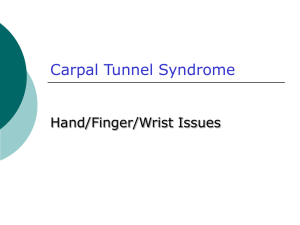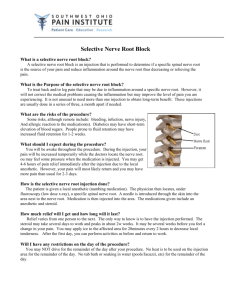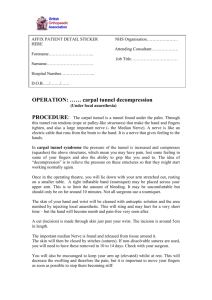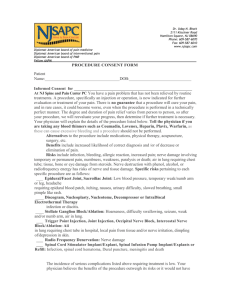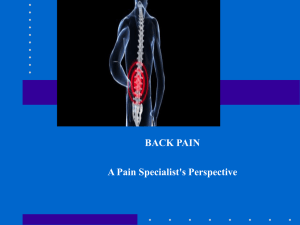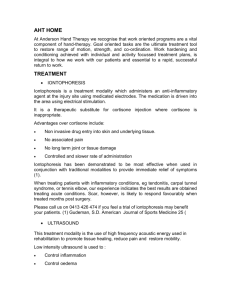Carpal Tunnel Syndrome – (pressure on the median nerve in the
advertisement
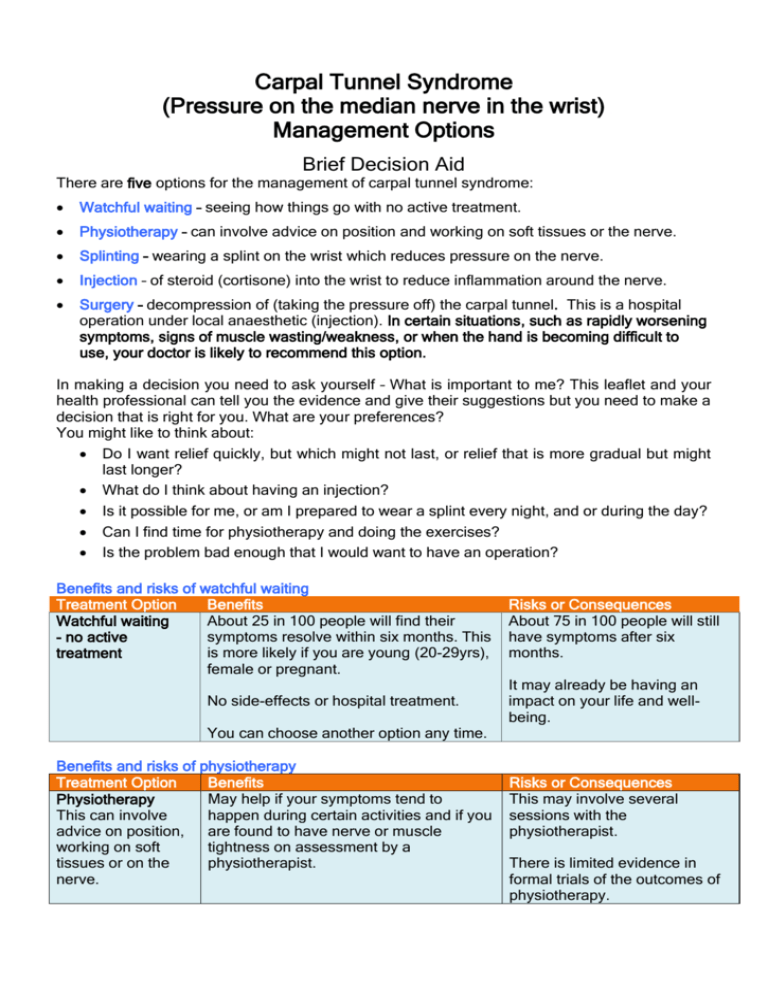
Carpal Tunnel Syndrome (Pressure on the median nerve in the wrist) Management Options Brief Decision Aid There are five options for the management of carpal tunnel syndrome: Watchful waiting – seeing how things go with no active treatment. Physiotherapy – can involve advice on position and working on soft tissues or the nerve. Splinting – wearing a splint on the wrist which reduces pressure on the nerve. Injection – of steroid (cortisone) into the wrist to reduce inflammation around the nerve. Surgery – decompression of (taking the pressure off) the carpal tunnel. This is a hospital operation under local anaesthetic (injection). In certain situations, such as rapidly worsening symptoms, signs of muscle wasting/weakness, or when the hand is becoming difficult to use, your doctor is likely to recommend this option. In making a decision you need to ask yourself – What is important to me? This leaflet and your health professional can tell you the evidence and give their suggestions but you need to make a decision that is right for you. What are your preferences? You might like to think about: Do I want relief quickly, but which might not last, or relief that is more gradual but might last longer? What do I think about having an injection? Is it possible for me, or am I prepared to wear a splint every night, and or during the day? Can I find time for physiotherapy and doing the exercises? Is the problem bad enough that I would want to have an operation? Benefits and risks of watchful waiting Treatment Option Benefits Watchful waiting About 25 in 100 people will find their - no active symptoms resolve within six months. This treatment is more likely if you are young (20-29yrs), female or pregnant. No side-effects or hospital treatment. Risks or Consequences About 75 in 100 people will still have symptoms after six months. It may already be having an impact on your life and wellbeing. You can choose another option any time. Benefits and risks of physiotherapy Treatment Option Benefits Physiotherapy May help if your symptoms tend to This can involve happen during certain activities and if you advice on position, are found to have nerve or muscle working on soft tightness on assessment by a tissues or on the physiotherapist. nerve. Risks or Consequences This may involve several sessions with the physiotherapist. There is limited evidence in formal trials of the outcomes of physiotherapy. 2 Benefits and risks of splinting Treatment Option Benefits Splinting Between 50 and 70 in 100 people will This involves a have significantly improved symptoms at splint that is six months. strapped to the hand and wrist – It is especially good for night-time sometimes worn symptoms. just at night and sometimes during Some clinicians can issue these straight the day as well. away. Benefits and risks of injection Treatment Option Benefits Injection About 75 in 100 people will This involves find their symptoms settle injecting a small within 1-2 weeks of the dose of steroid injection. (cortisone) into the wrist to reduce You may avoid surgery. inflammation around the nerve. The injection can be repeated after an interval of a month or two if necessary. Particularly useful if symptoms have occurred in pregnancy or if you have had hypothyroidism (low thyroxine level). Benefits and risks of surgery Treatment Option Benefits Carpal tunnel 80 - 90 in every 100 decompression people are satisfied with This is an operation the operation at one year done in hospital post-op. under local anaesthetic. Performed under local Can be done with anaesthetic so very little an open cut risk of side effects. (incision) or with use of an Very low recurrence rate. endoscope (keyhole surgery). Risks or Consequences Between 30 and 50 in 100 people will not notice much of a difference in their symptoms. It can be worn during the day though some people may find this a nuisance or restricting. Sometimes you can only get the splint from a Physiotherapy Department or you might have to buy the splint. Risks or Consequences About 25 in 100 people will not get improvement following an injection. Less useful if symptoms are very severe, if you are diabetic, or if symptoms have been present for more than a year. There is a very small risk of damage to the median nerve – this could happen once in every 1000 injections and can lead to permanent pain or numbness The symptoms do recur in about 30-50 in every 100 people after a single injection. The injection is sometimes painful although most people cope with it very well. Risks or Consequences 10 – 20 in every 100 people are not satisfied with the operation at one year post-op, with 8 in 100 feeling they are worse off at two years. Heavy lifting is not advised for two weeks after surgery. Heavy gripping/pinching is not advised for up to six weeks. There is a very small risk of injury to the nerve or surrounding structures. You are left with a small scar (3-5cm) on the inside of your wrist and there is a small chance of this becoming sensitive, painful or thickened. Brief Decision Aids are designed to help you answer three questions: Do I have options? What are the benefits and risks of these options, (and how likely are they)? How can we make a decision together that is right for me? 687319147



